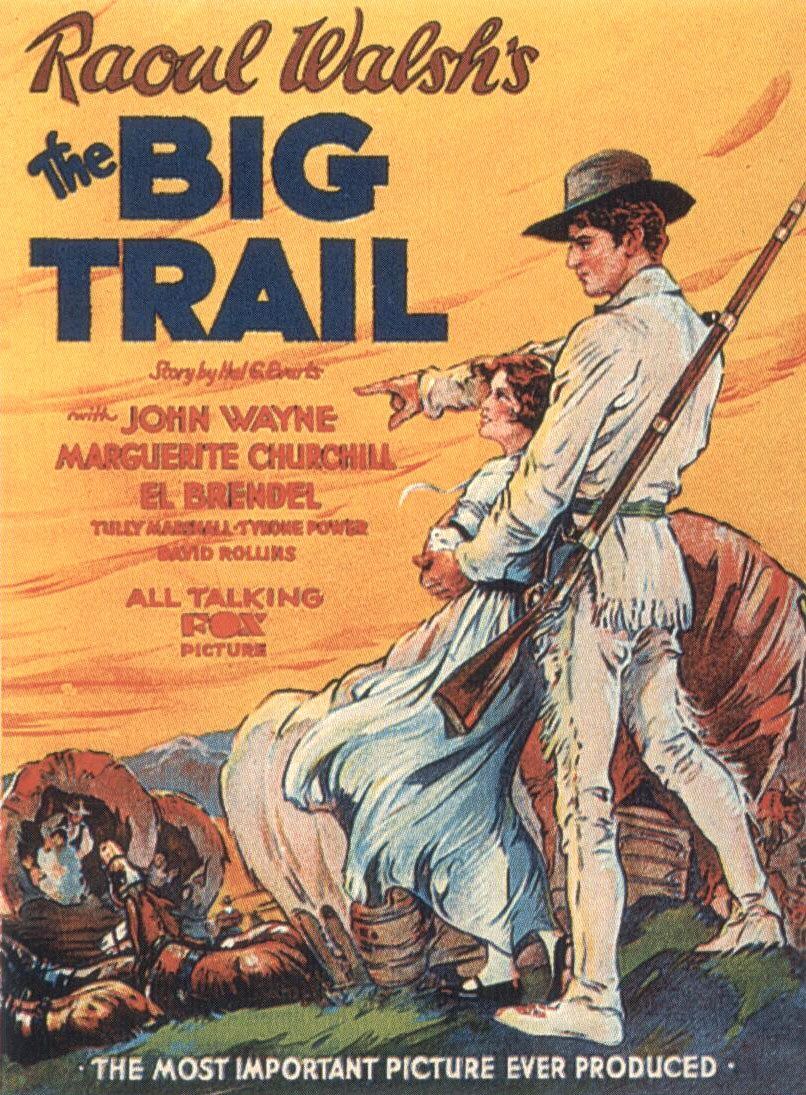
John Wayne started his movie career as a prop boy. He was given numerous roles as an extra, mostly by John Ford, before landing his first starring role in Raoul Walsh’s The Big Trail. The film was a box office flop and Wayne would fritter away for the next decade making poverty row westerns until John Ford put him in Stagecoach (1940) and made him a star.
The Big Trail is epic in every conceivable way (which makes it all the more astounding they were willing to put the unknown Wayne in as the lead). It was shot on a new 70mm film process called Grandeur. Filming took place over four months in seven different states. He hired over 700 Indians from five different tribes and used some 185 wagons, 1,800 cows, 1,400 horses, 500 buffalos, and 700 chickens, pigs, and dogs in the production.
I can’t imagine what it would have been like to have seen it on the big screen in glorious 70mm. Most people can’t because it was only shown that way in a few theaters. For proper viewing, theaters needed to upgrade their screens and most were unwilling to do so having just spent a small fortune upgrading for sound. The 70mm print was nearly lost to time, but the original negative was lovingly restored in the 1980s.
Watching it on the small screen is still a sight to behold. Walsh makes every use out of the grand scale. The plot, about a caravan of settlers crossing the Oregon Trail, allows for great use of the widescreen format. We see hundreds of settlers on horses, oxen and in wagons rolling across the land, the camera shooting from far off allowing us to see the American west in all of its glory.
There is a scene in which the settlers must cross a river. The rapids rage and horses and pushed downriver like little plastic toys. Wagons lose their footing and are rushed downstream while men desperately try to rescue the women and children on board.
Another scene has the settlers lowering themselves, their cattle, and their wagons by rope down a steep cliff. Once again the camera sits back showing us the massive scope of this endeavor.
But even in smaller scenes, Walsh makes use of this new format. The film begins on the banks of the Mississippi River. A scene will involve a few people talking in the foreground, but behind them, the camera shows a mass of humans, animals, buildings, and ships going about their business. Interior scenes leave a door or window open allowing a steady stream of traffic to mingle about just outside. There must have been a dozen people hired just to handle all the extras.
Unfortunately, the plot doesn’t quite live up to the filmmaking. The main story, that of the settlers traveling west is good. It really demonstrates just how harrowing and difficult that trip must have been.
But the b-stories are not particularly interesting. Wayne plays Breck Coleman who is hired on as a scout for the caravan. He agrees to the trip because he believes that the man hired to lead the caravan, Red Flack (Tyrone Power, Sr.), and his companion Lopez (Charles Stevens) murdered his friend and stole his wolf furs. But this story never creates any real tension. Power is enjoyable in the role, but I was never really interested in the outcome of their battle. Marguerite Churchill is the love interest, but the two fail to sizzle.
Wayne is good. And young. And surprisingly beautiful. He has the walk and some of the talk, but the swagger isn’t quite there. He’s a young man looking for fame and glory, not the older man I’m used to seeing who already has it.
Ultimately, the film is an odd mix of a sometimes rather dull plot mixed with some remarkable filmmaking and stunning visuals. The latter absolutely make the former worth sitting through.
